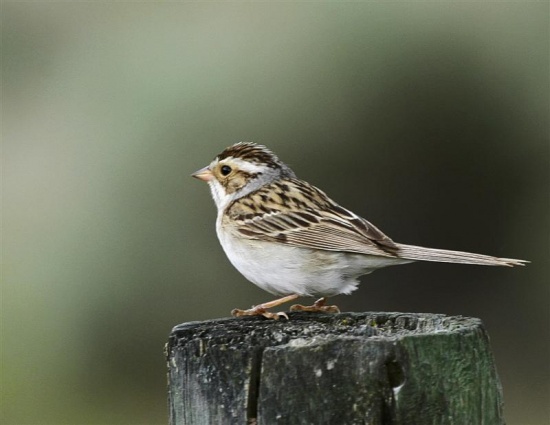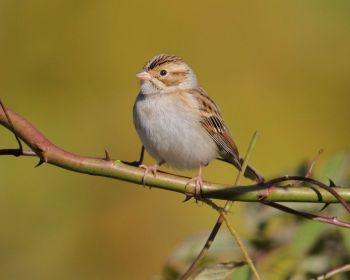(→External Links: GSearch checked template) |
(→External Links: Multiple GSearches combined) |
||
| Line 27: | Line 27: | ||
{{ref}} | {{ref}} | ||
==External Links== | ==External Links== | ||
| − | {{GSearch|Spizella | + | {{GSearch|"Spizella pallida" {{!}} "Clay-colored Sparrow"}} |
| − | {{GS-checked}} | + | {{GS-checked}}1 |
<br /> | <br /> | ||
<br /> | <br /> | ||
[[Category:Birds]][[Category:Spizella]] | [[Category:Birds]][[Category:Spizella]] | ||
Revision as of 21:02, 6 July 2023
- Spizella pallida
Identification
Adults have light brown upperparts and pale underparts, with darker streaks on the back. They have a pale crown stripe on a dark brown crown, a white line over the eyes, a dark line through the eyes, a light brown cheek patch and brown wings with wing bars. The short bill is pale with a dark tip and the back of the neck is grey; they have a long tail.
Similar species
Non-breeding adults and immatures resemble Chipping Sparrows and Brewer's Sparrows; they often form flocks with these birds outside of the nesting season. Compared with Chipping Sparrow, Clay-colored have pale lores (black line in Chipping) and a winter Clay-colored has rather buffy undersides vs grey in Chipping. Brewer's in winter is a weakly patterned bird, but there is a little overlap with Clay-colored meaning that a few birds may be impossible to id.
Distribution
Clay-colored Sparrows breed in northern US and southern Canada from just east of the Rockies almost to the east coast. They reach further north in the west part of the range than in the east. They are complete migrants, meaning there is no overlap between summer and winter ranges. They typically migrate in flocks through the Great Plains to southern Texas and Mexico.
Wanderers are found in the fall from the Atlantic to the Pacific Coasts. In these cases, the wandering Clay-colored Sparrows are usually found with Chipping or Brewer's Sparrows.
Taxonomy
This is a monotypic species[1].
Habitat
Their breeding habitat is shrubby open areas and Jack Pine woods across central Canada and central northern United States east to the Great Lakes.
Behavior
Diet
They forage on the ground, mainly eating seeds and insects. Outside of the nesting season, they often feed in small flocks.
Breeding
The nest is an open cup on the ground or low in a shrub. While nesting, these birds may feed far from the nest; feeding areas are not defended.
Vocalization
The song is two to four insect-like buzzes on a single pitch. The call is a high tsip.
References
- Clements, J. F., T. S. Schulenberg, M. J. Iliff, S. M. Billerman, T. A. Fredericks, B. L. Sullivan, and C. L. Wood. 2019. The eBird/Clements Checklist of Birds of the World: v2019. Downloaded from http://www.birds.cornell.edu/clementschecklist/download/
Recommended Citation
- BirdForum Opus contributors. (2025) Clay-colored Sparrow. In: BirdForum, the forum for wild birds and birding. Retrieved 13 May 2025 from https://www.birdforum.net/opus/Clay-colored_Sparrow
External Links
GSearch checked for 2020 platform.1





